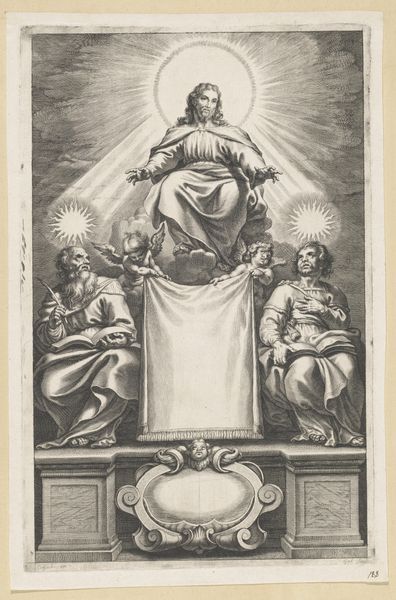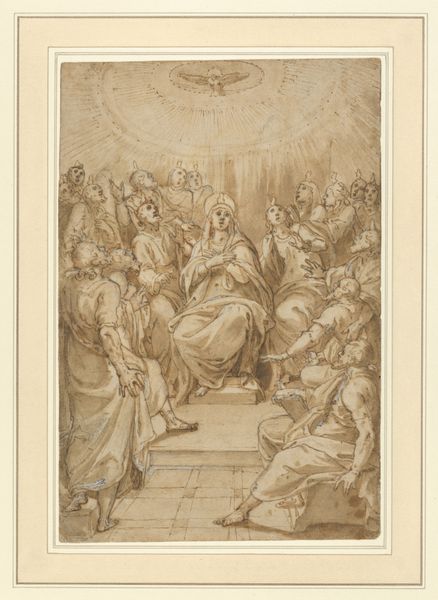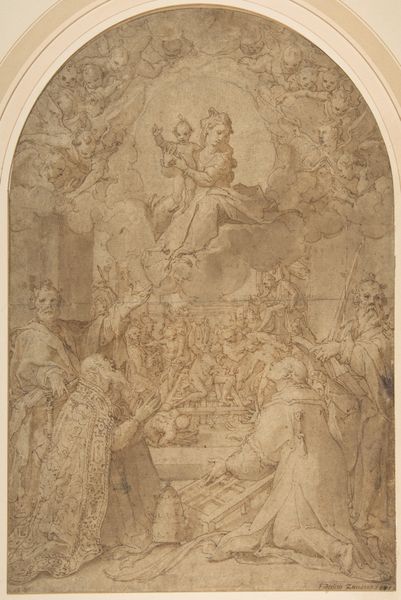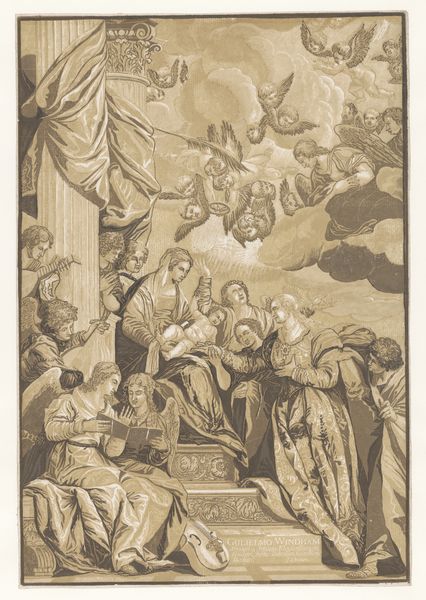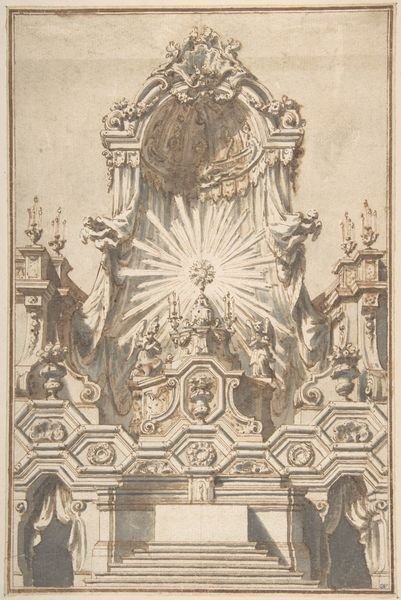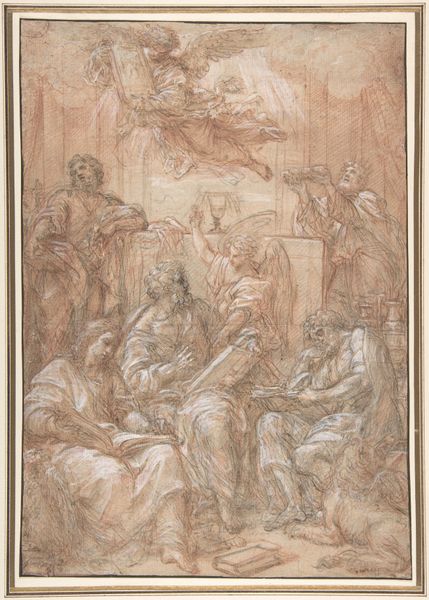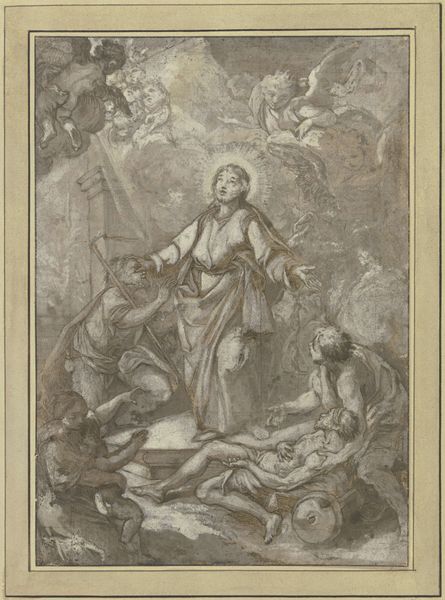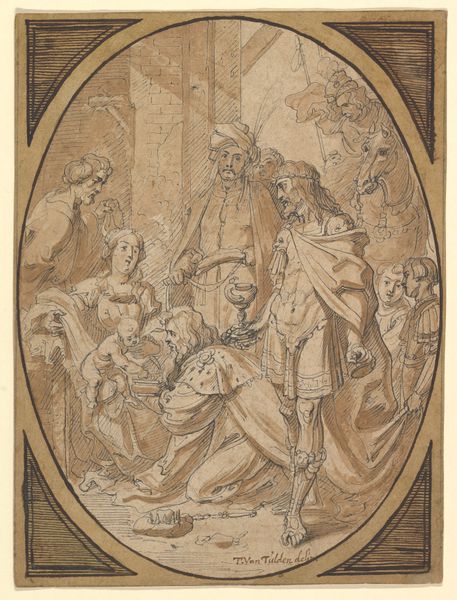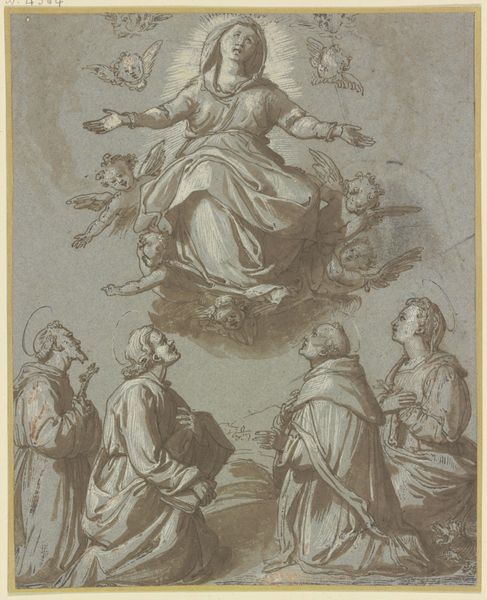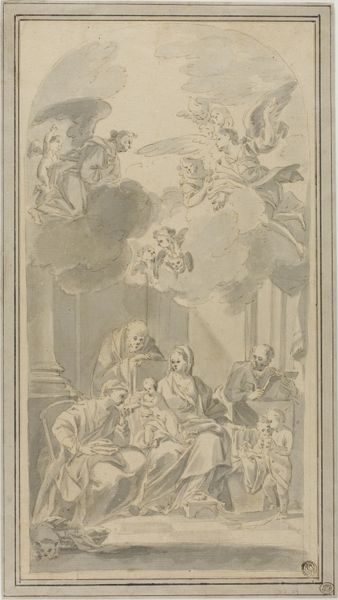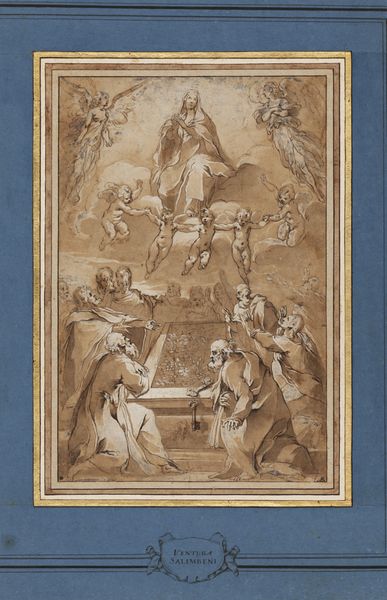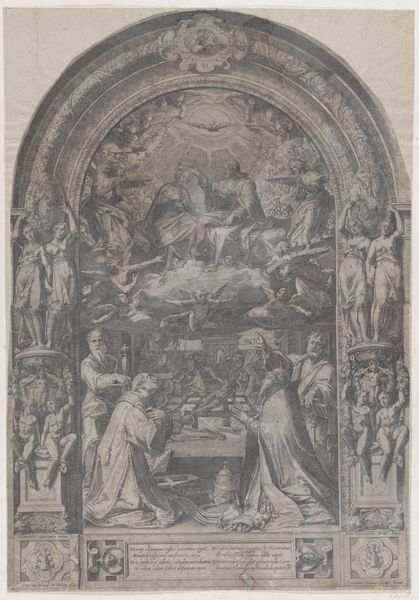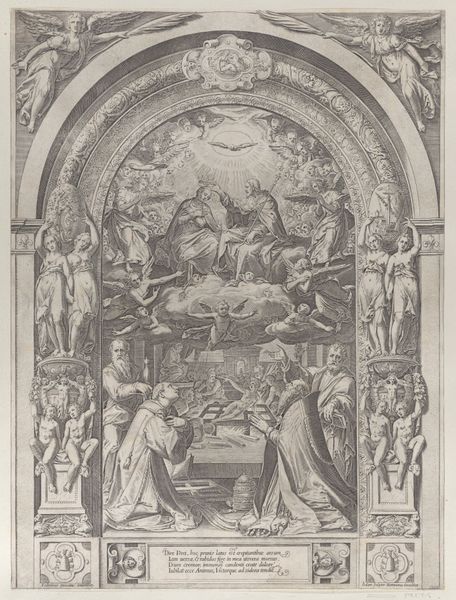
drawing, print
#
drawing
# print
#
figuration
#
11_renaissance
#
underpainting
#
men
#
history-painting
#
italian-renaissance
#
virgin-mary
#
angel
Dimensions: 9 13/16 x 5 3/4in. (25 x 14.6cm)
Copyright: Public Domain
Curator: Cesare Nebbia, a prolific but often overlooked figure of the late Renaissance, created this work titled "The Assumption of the Virgin" some time between 1536 and 1614. The work before us is a drawing, a preparatory design possibly for a larger painting, and its current home is the Metropolitan Museum of Art. Editor: My immediate reaction? Drama. The upward surge, the desperate figures below... it’s like a theatrical production captured on paper. The color palette is subdued, but somehow, that intensifies the emotional punch. Curator: Precisely. Observe the composition: Nebbia employs a distinct hierarchical arrangement. The Virgin Mary occupies the apex, bathed in light and surrounded by a heavenly host, creating an immediate focal point. Below, we have the earthly realm, depicted with much denser figures and dramatic gestures, reinforcing the spiritual elevation. Note the strong vertical axis intersected by diagonals, all directing our gaze. Editor: What gets me are those figures below. Each one is so individual—some awestruck, some reaching, some just... baffled. It makes you wonder what each of their stories are, what they’re thinking as they witness this miraculous event. And the grid-like underdrawing is exposed which feels very modern. Curator: That grid is particularly informative. Nebbia utilized it for accurate scaling, hinting this was a preliminary design. The lines do not detract but are intrinsic to understanding artistic methodology and intention. As for the figures, yes, Nebbia does an extraordinary job depicting diverse human reactions through posture and facial expressions. His deployment of chiaroscuro—the contrast between light and dark—heightens the drama further. It draws the eye, yes? Editor: Absolutely! That intense light on Mary makes her practically glow, lifting her right off the page. The overall feeling of movement combined with raw emotion keeps me engaged, although admittedly it’s not my favorite Renaissance color. What does this scene tell us about how Italians were seeing religion? Or were encouraged to see religion, back then? Curator: It exemplifies High Renaissance ideals, fused with burgeoning Mannerist tendencies. The exaggerated poses, the emotional intensity... but fundamentally, it speaks of divine intervention, hope, and the mediating role of the Virgin within the Catholic framework. This was created in the era of Counter-Reformation in response to reformation efforts from Martin Luther, when depictions like these would inspire religious emotion. Editor: It definitely makes you consider how a simple drawing or print can contain so many different kinds of cultural information. Art nerd stuff, or deeply religious and profound? Hard to say really... I admire Nebbia's technique, he has the eye and steady hand of an old master, though. Curator: Agreed. Thank you for illuminating those crucial tensions. Editor: Thanks, you, too. Always good to stretch the mind now and again.
Comments
No comments
Be the first to comment and join the conversation on the ultimate creative platform.
